Before I start, however, I have been asked by more than one curious soul about Japanese toilets. For their benefit and yours, here is my reply: There are three kinds of toilets. The Western, which my butt approves of. The keyhole shape in the floor, which is actually better for your digestive tract, as squatting helps get the system moving along. However, in public parks for example, you find that not everyone is that good at aiming. Yuck. And finally, there is the deluxe Japanese model, which I have not actually felt like exploring much. You sit, and the seat is heated. That just makes me think that someone else was there before me, but I guess it's a luxury for some. After you finish, you can press any of six buttons, with helpful illustrations showing a butt being blandished with fountains of varying size. Then, there are two flush buttons, one with a thick arrow and one with a thin arrow, which indicate how much water you think is needed. And, finally, there is toilet paper. In public toilets, sometimes there is no paper, but the capitalist system has solved that. At the exits to many subways, barkers will be standing shouting things, and handing out little plastic wrapped packets of tissues with advertising slogans in them. These come in handy. In private toilets, there is always paper, which comes in the usual rolls but with an awkward metal lid on top against which you can rip the paper off. When you're done, you are supposed to pull out a length of paper and make a little triangle that sticks out about an inch. That makes it more convenient for the next person to grasp when they need paper.
Back to our day. My glasses aren't the best, so I tackled the subway map with some misgivings. Eventually, I puzzled out how to get from here to there by looking at the station names instead of trying to understand which color went where and what station it did it at. So, we ended up on the other side of Tokyo, where we could have transfered to a train which would take us back but slightly to the north where we wanted to be. At that point Camilla took over, bless her and her confident eyeballs. We went back to a transfer station and took a better train, and then another train. Tokyo's transit system is a marvel of capitalism, with FOURTEEN separate lines carrying 8.7 million passengers DAILY. We met most of those eight million people today.
One of the skills I've been honing is how to find my way around Tokyo. Apparently, men use distance and direction to figure such stuff out, and David uses geological features such as ridges and drainages. Being female, I use landmarks. This works if I choose the right landmark, but not if I remember it as "that place with lots of neon lights and signs in kanji," or, "where umpteen streets intersect at once with too many traffic lights and hundreds of people dressed in black are walking around." I'm beginning to learn how to pick out things - yellow buildings with black fire escapes, or a McDonald's, a Starbucks, and a pachinko parlor all in a row - that aren't the default urban setting. These handy skills don't work, of course, if I haven't been someplace before, but nevertheless we eventually did end up at the garden.
The Mukojima-Hyakken Gardens are an Edo Period attraction, with, they say, something in bloom year-round. In early December, it was a small white flower on a shrub. It could just as well have been specks of lint on bare sticks, but you have to admire the blossoms for trying. We wandered the pleasant graveled paths and felt at home. This was not a French formal garden, with squared off trees and lawns with individually clipped blades of grass. This garden was designed to be comfy.
There was a carp the size of a salmon, there were butterball sized children bouncing around thick blanketed blobs in strollers which we guessed were siblings, there were and elderly men shuffling along, and there was a crew of workers scrubbing the calligraphed stones. The brochure says, "Of the seven gods that comprise the Sumidagawa Seven Gods of Good Fortune, the one known as Fukurokuju is located in this garden." Even after a month here, it is always freshly delightful to find that Shinto is a living religion. We went to visit Fukurokuju, and then walked back, with no false turns, I might add, to brave the trains.
The next goal was to find Harajuku, the hippest spot in Tokyo, which is the hippest city in the world. With a bit of deft train hopping, helped along by helpful station attendants, we debarked at the top of a street that looked a bit like a beehive, if you can imagine bees dressed like cute little girls with pom-poms, lace, fake fur, and tutus, like California girls with bleached hair and black clothes, or like other things that actual bees don't think are all that important. It was noisy, incredibly crowded, and fun. We walked the length of the street, finding all kinds of examples of harajuku style in the shops. My favorite is the hard-soft look, which might put cashmere and lace together with ripped blue jeans. But I'm pretty fond of the strange things people do with their hair, too.
One street over, and we were in Grownup Land. There, all the trees were lit up with tiny Christmas lights. Paris couture houses lined the streets, and we went into Chanel, Ralph Lauren, and others to see slinky bag dresses, $100,000 diamond earrings, and clunky handbags made from rare beasts. It was exciting to be near so much wearable art.
Finally, we had pizza. Anchovy pizza. In the States, people sneer when I order anchovies, but here, it is a land of fish lovers. Anchovy pizza was one of the few choices they had. So we ordered it.
Afterwards, it was a mere matter of taking two different trains and a hot tub.
Tomorrow, we fly home. We'll miss it here.
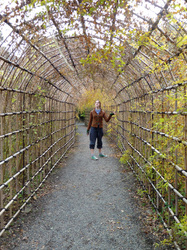
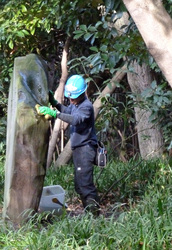
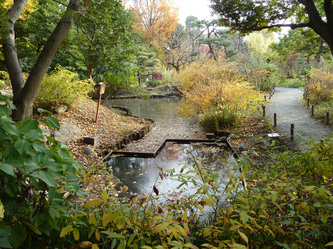
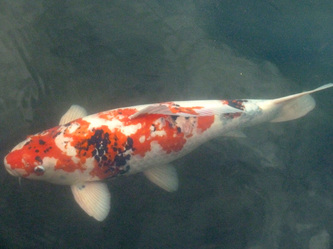
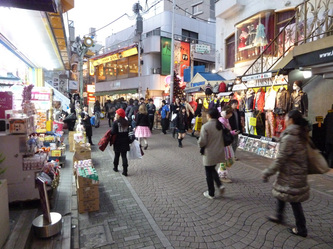
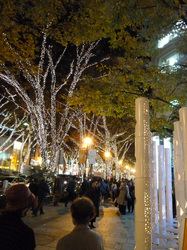
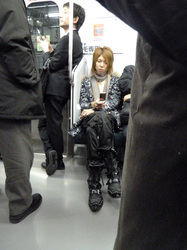
 RSS Feed
RSS Feed
